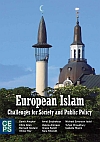The Headscarf Question: What is Really the Issue?
The Headscarf Question: What is Really the Issue?
Author(s): Valérie Amiraux
Subject(s): Sociology of Culture, Inter-Ethnic Relations, Ethnic Minorities Studies
Published by: CEPS Centre for European Policy Studies
Keywords: headscarf;
Summary/Abstract: Dangerous, scary, intriguing, threatening, intimidating, oppressive, irritating, aggressive, traditional, conservative, reactionary … These are a few of the adjectives one hears in discussions of what is confusingly called in European contexts not only the headscarf, but also the veil, hijab, nikab, tchador, jilbab, burqa or khimar.
All these terms designate a scarf that Muslim women wear when outside the home to cover their hair, shoulders and breasts and, in some cases, their entire body including face and hands. The headscarf has become a sensitive issue, giving rise to legal disputes and political controversies in several EU member states, notably France, Belgium, Germany, the Netherlands and the UK.
Headscarves, and by definition the Muslim women wearing them, nowadays stand for “everything that is thought to be wrong with Islam”. In addition to being obliged to be bare-headed on ID documents as in France, women wearing the headscarf have also been excluded in courts, universities, work places, hospitals and city halls. While the terrain of exclusion is widening, the groups of people affected are also widening to include young girls (adolescents) as well as adults.
Book: European Islam. Challenges for Public Policy and Society
- Page Range: 124-143
- Page Count: 20
- Publication Year: 2007
- Language: English
- Content File-PDF

